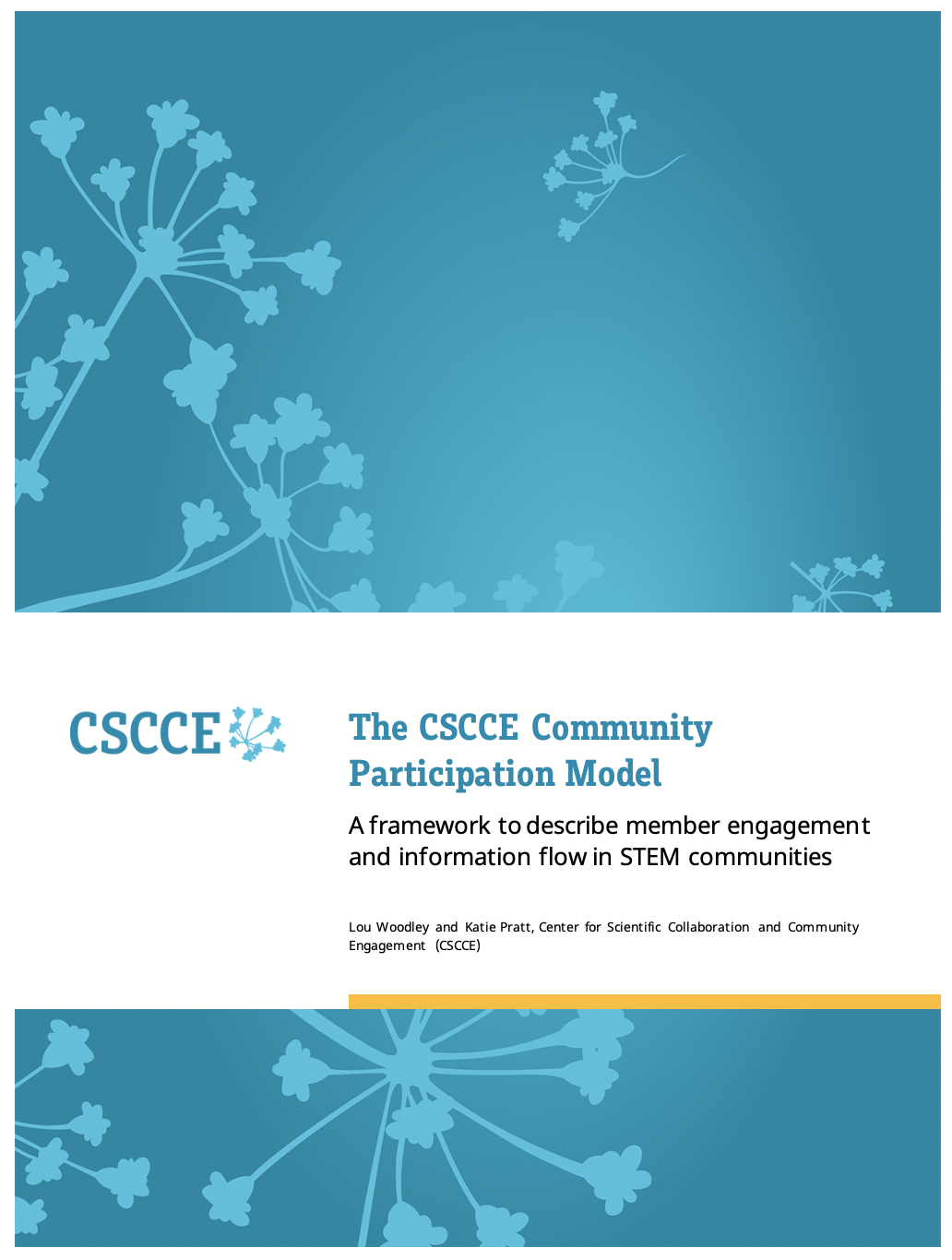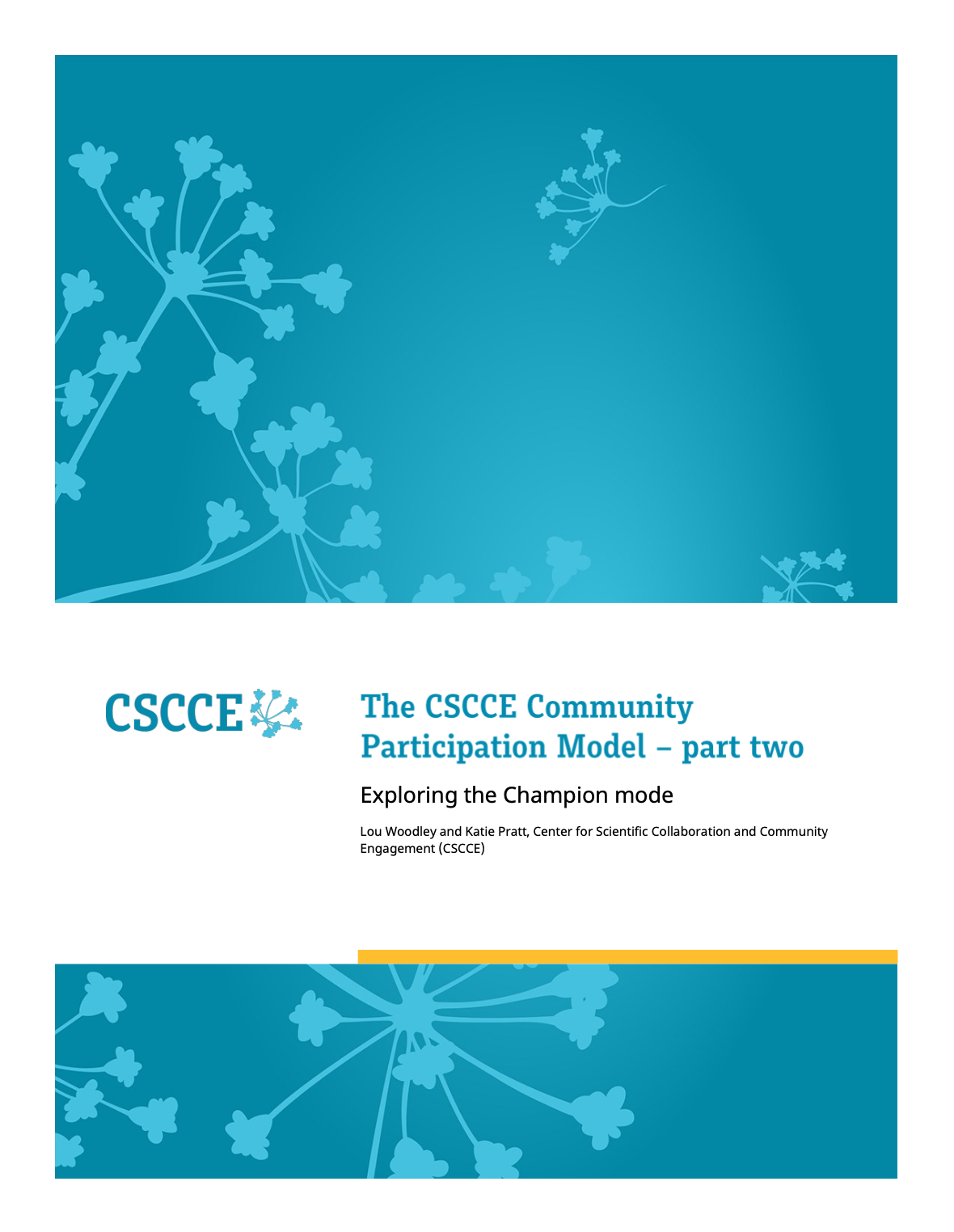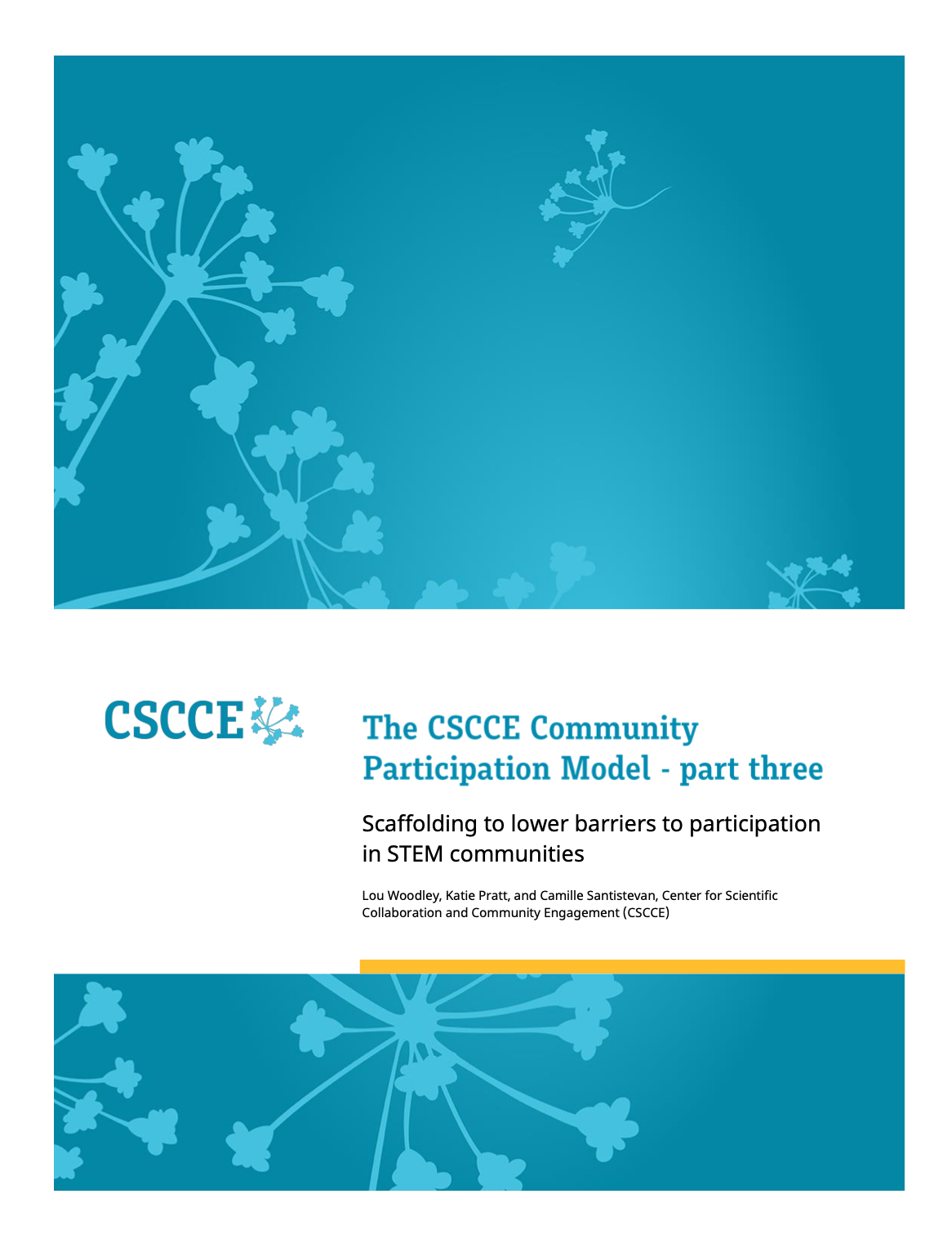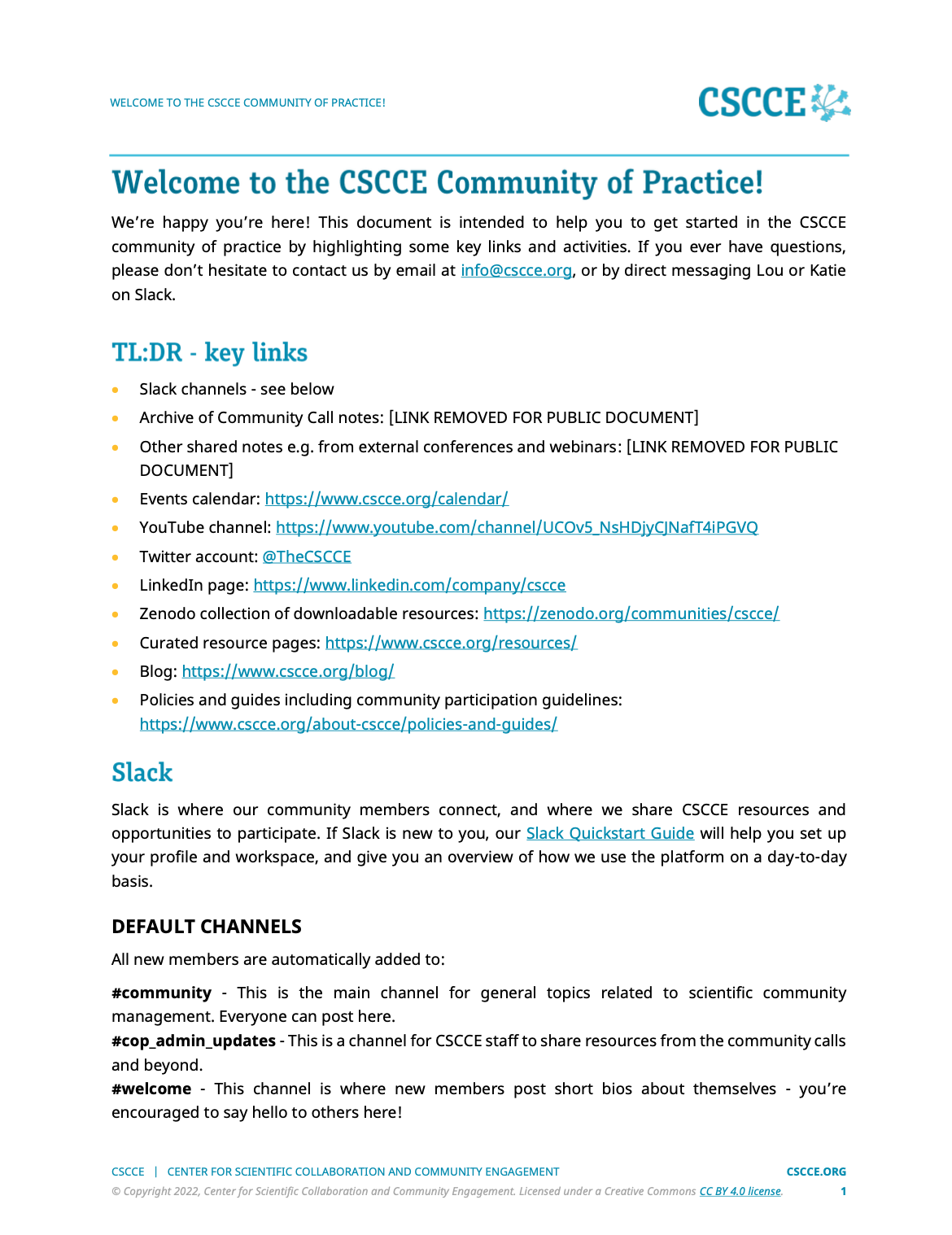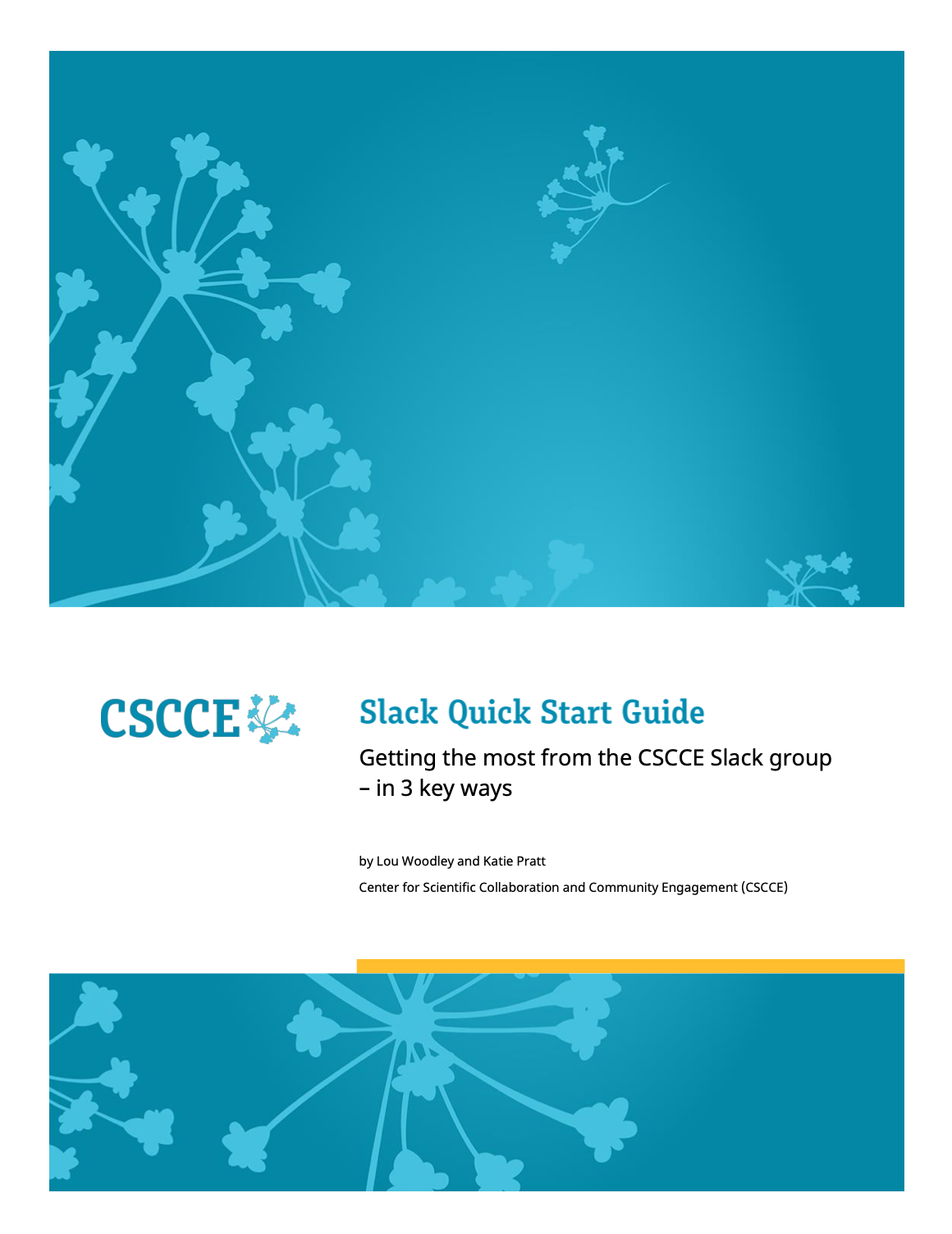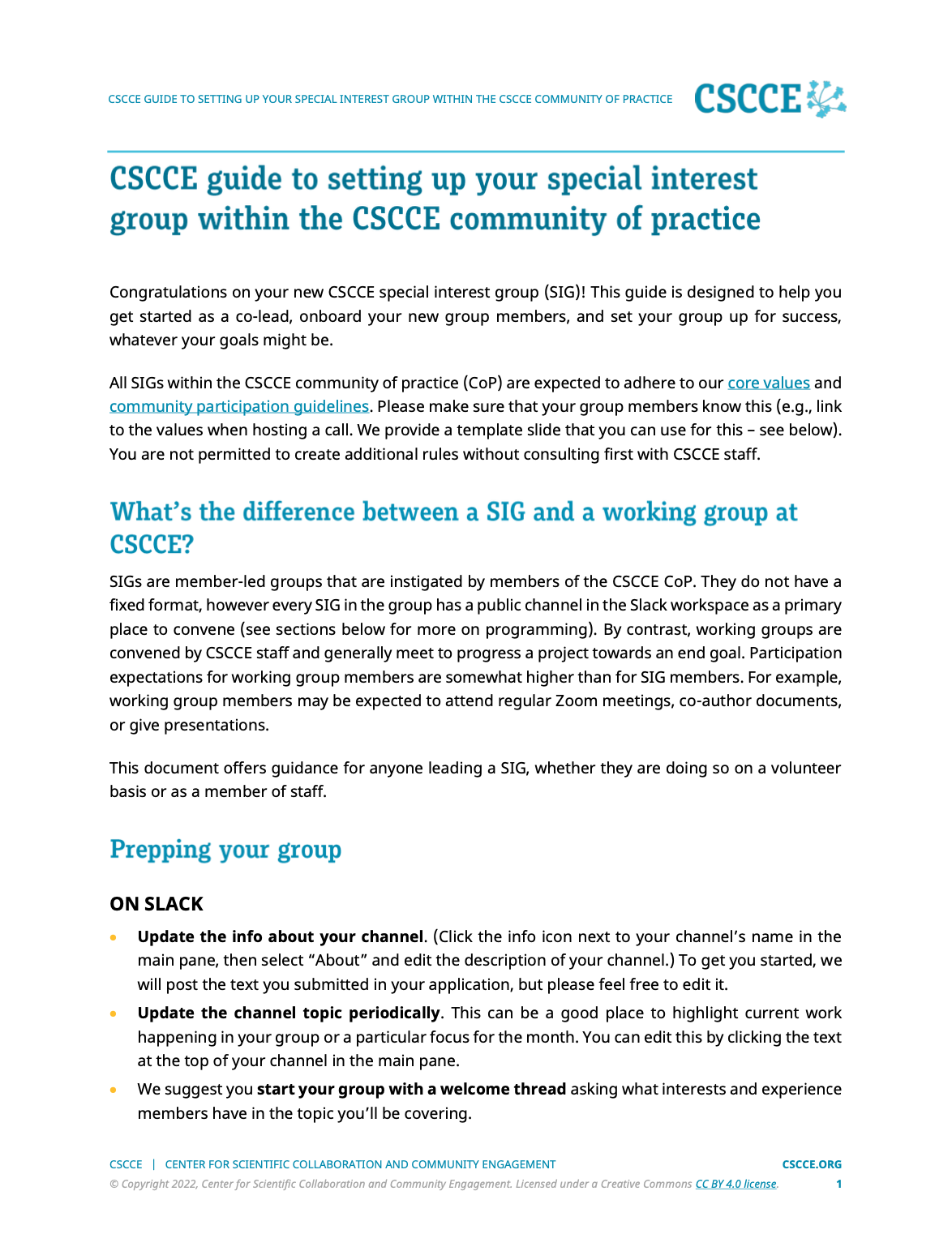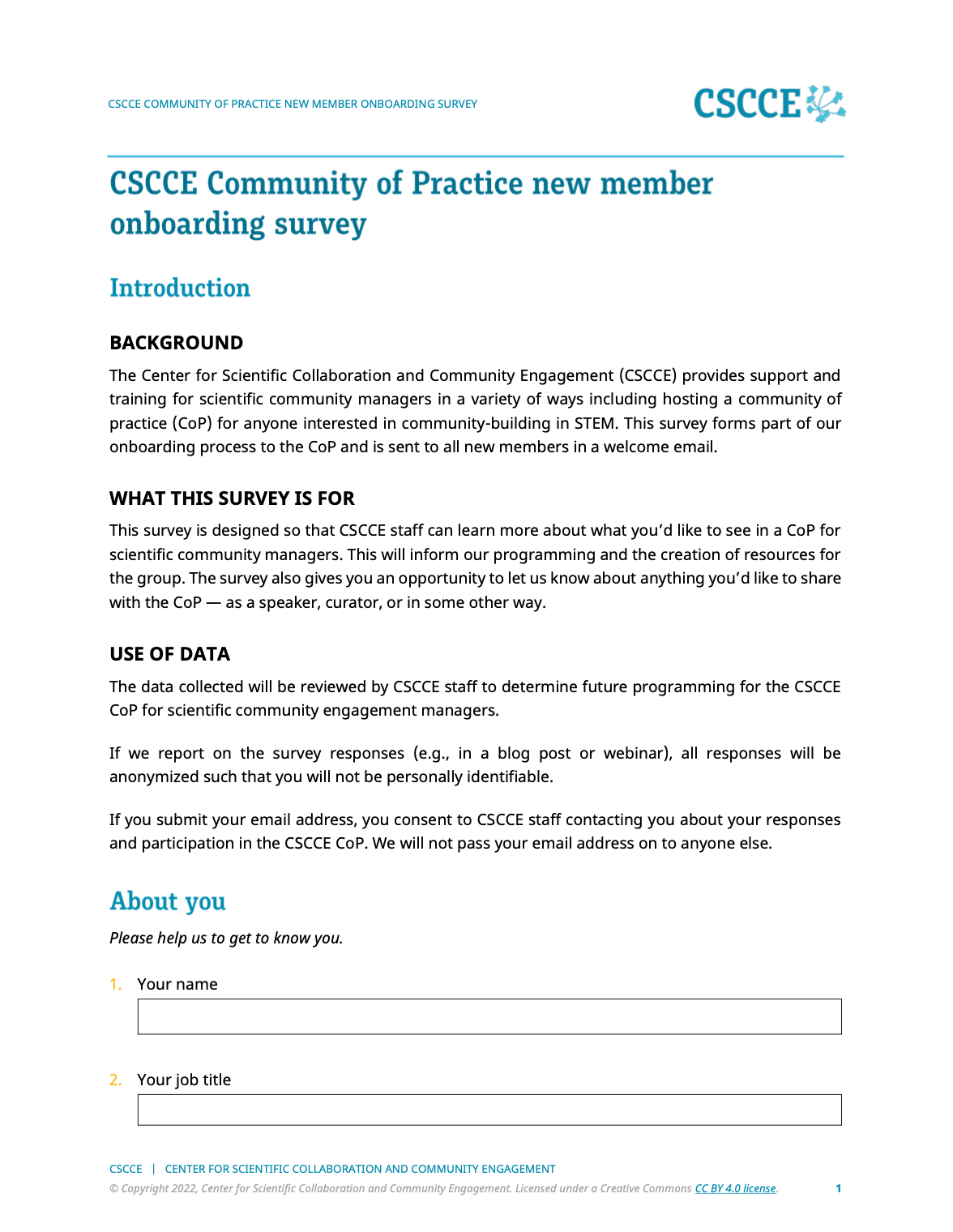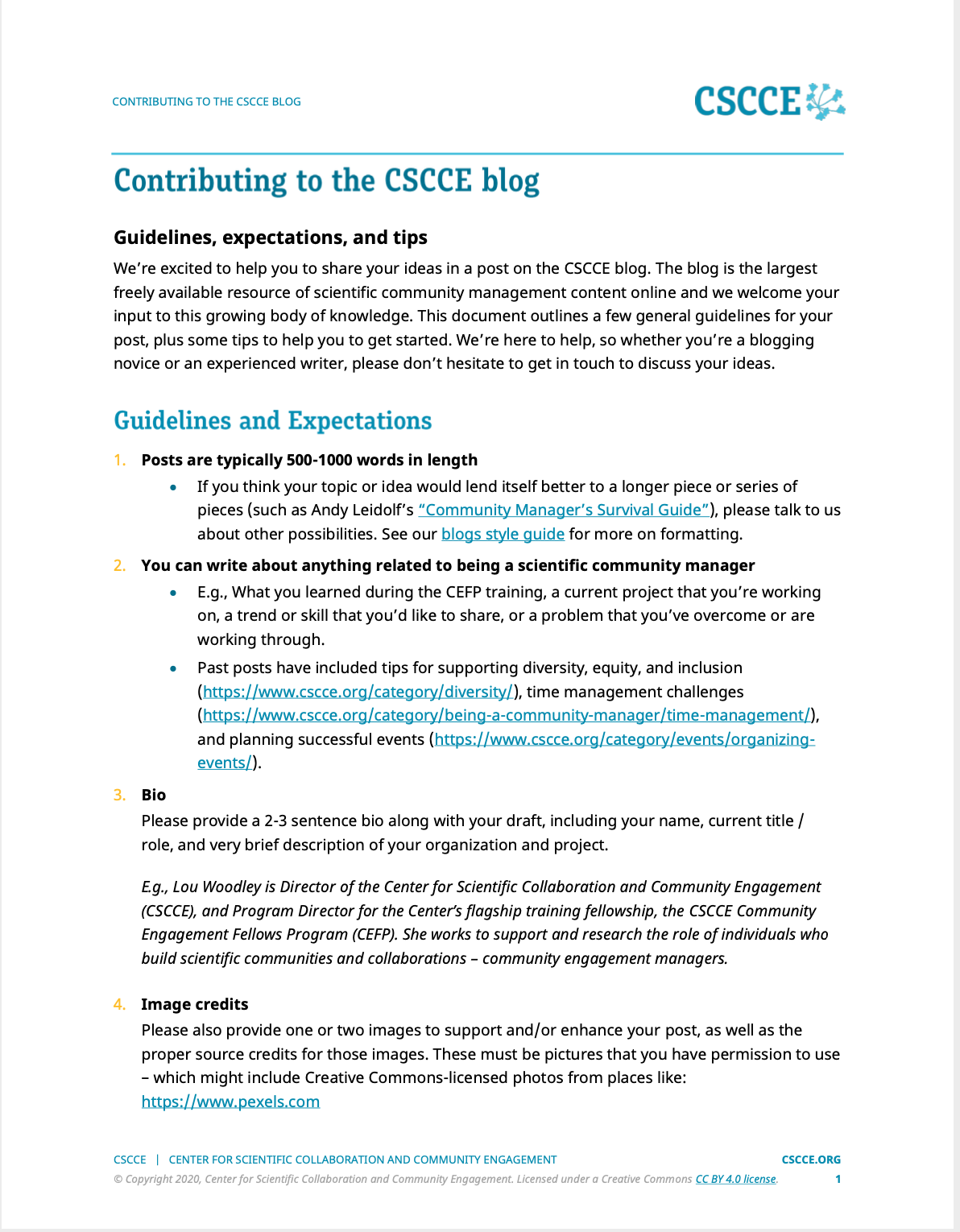On this page you’ll find guidebooks and resources to help you create programming and scaffolding that meet the needs of your community members. We have a separate resource page focusing on organizing community events.
CSCCE Community Participation Model
The CSCCE Community Participation Model describes four modes of member engagement that can occur within a community – CONVEY/CONSUME, CONTRIBUTE, COLLABORATE, and CO-CREATE – and one that can occur outside of it: CHAMPION. This series of guidebooks walks you through the model, the role of champions, and the importance of scaffolding.
The CSCCE Community Participation Model: A framework to describe member engagement and information flow in STEM communities
by Lou Woodley and Katie Pratt
The CSCCE Community Participation Model describes four modes of member engagement that can occur within a community and one that can occur outside of it. This guidebook is intended to help you use the model to inform your community member engagement strategy.
The CSCCE Community Participation Model (part two) – Exploring the Champion mode
by Lou Woodley and Katie Pratt
In this companion guidebook, part two, we focus in on the CHAMPION mode, in which emerging leaders within a community act in either informal or formal capacity to MAINTAIN, GROW, or EVOLVE the community.
The CSCCE Community Participation Model (part three) – Scaffolding to lower barriers to participation in STEM communities
by Lou Woodley, Katie Pratt, and Camille Santistevan
In this third part of our CSCCE Community Participation Model series, we focus on the role of scaffolding to support and grow inclusive communities in STEM.
Scaffolding templates
Scaffolding consists of the materials and activities that complement community programming, to lower barriers to member participation and/or support multiple modes of participation. Technically, a community can function without scaffolding, but using it effectively can help members feel safe and welcome. As such, we consider scaffolding to be essential for community health.
We have made the scaffolding that we use in the CSCCE community of practice available under a CC BY license so that you can reuse and remix them with attribution in your own communities.
Welcome to the CSCCE Community of Practice! A tipsheet for new members
by Lou Woodley and Katie Pratt
This document is intended to help new members of the CSCCE community of practice, which is predominantly hosted on Slack, get started. It highlights some key links, programming, and activities, and was updated to v2 in February 2022.
Slack quick start guide
by Lou Woodley and Katie Pratt
This quick start guide is a brief technical orientation for Slack group members to help them to set up their profile and configure Slack notifications in a way that works for them. This guide was updated in February 2022.
CSCCE start up guide for special interest group leads
by Lou Woodley and Katie Pratt
This guide is designed to help co-chairs of CSCCE special interest groups get started, onboard new group members, and set their group up for success, whatever the group’s goals might be. This guide was updated in February 2022.
CSCCE Community of Practice new member onboarding survey
by Lou Woodley
As part of the onboarding process to the CSCCE community of practice, we ask new members to tell us a little bit more about the kind of programming they would find useful using this survey. Can reuse or adapt this survey in your own community.
Guidelines for contributing to the CSCCE blog
by Lou Woodley, Elizabeth Garbee, and Katie Pratt
This document is intended to help you write an engaging guest blog post for the CSCCE blog, the largest freely available resource of scientific community management content online.
Metaphors for community management
Talking about community management can be challenging at times, especially if you’re talking to someone for whom the idea of community management is unfamiliar. In these “concept booklets,” we curate a series of blog posts that explore various aspects of community management using metaphors: a house party, a garden, and (coming soon) the night sky.
The house party metaphor for community management: Essays and reflection questions to unlock your community programming through metaphor
by Katie Pratt and Lou Woodley
The house party metaphor is particularly useful for thinking through the role of scaffolding, describing the configuration of your community, and determining what happens when something goes awry and you have to respond to a challenging situation.
The garden metaphor for community management: Essays and reflection questions to unlock your community programming through metaphor
by Katie Pratt and Lou Woodley
The garden metaphor offers the opportunity to get to know your members better, and also explore how the community connects and supports each other within the overall structure of the garden.
Community calls
- On our March 2020 community call, two project teams from the CSCCE Community Engagement Fellows Program (CEFP) shared their research into what makes a great ambassador (aka champions) program and how community engagement managers can support them. Recap blog post.
- Our August 2020 community call coincided with the release of the CSCCE Community Participation Model, and to celebrate, we invited two CEFP alumni to share their experiences using the model to inform how they think about, and engage, the members of their communities. Recap blog post.
- Our October 2021 call focused on the role of community champions in creating engaged, welcoming, and productive communities. Recap blog post.
- Our February 2022 community call focused on scaffolding for participation. Recap blog post.
- Our November 2022 community call featured a panel discussion moderated by Yanina Bellini Saibene about how to engage volunteers in your community programming. Recap blog post.
- Four our February 2023 community call, we invited Sara Kobilka and Rebecca Carpenter to share their expertise around creating inclusive and accessible community spaces online. Recap blog post.
- In November of 2023, we discussed the house party metaphor for community engagement during our community call. Read more about the metaphor.
Blog posts
- First Birthday Series: Behind the scenes of community programming. In this post, we go a little deeper into the strategy and philosophy behind the programming for CSCCE’s community of practice.
- Leveraging anniversary programming & content to nurture community. CEFP2019 Fellow Camille Santistevan (now CSCCE’s Director of Learning) explores how an organization’s anniversary can be an opportunity to nurture community, sharing 5 tips for success and 3 potential challenges to anticipate.
- Exploring community scaffolding using the house party metaphor. This post is part of a series that use metaphors to talk about community management – in this case, the post focuses on house party/community scaffolding.
- The garden metaphor for community management: Tending to the many different plants in your garden. In this post, another from our “metaphors” series, we talk about designing community programming to meet your members where they are.
